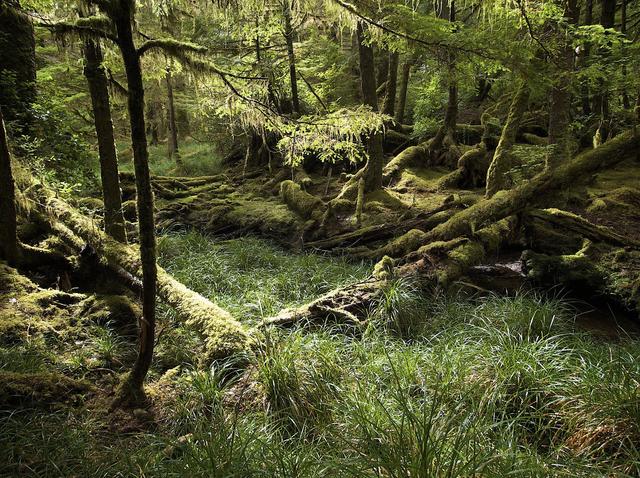Home » Regions » North America » Marine West Coast Forest
Marine West Coast Forest
Last updated: July 21st, 2020
To check where a specific point lies, you can look it up in our Ecoregion Locator.
↑Map Legend & Subregion List
This list will help you navigate the regions in case you have problems with viewing or clicking the interactive map above.
† Status: ✓ = Complete ○ = Needs Image … = Incomplete ∅ = Stub Only
↑Progress
Partially Complete | With Images | Complete w/ Images |
Get involved! You can help our ecoregion articles progress faster. Contact us if you have any additions or corrections to any of these articles. You can also donate to support our ongoing work.
↑About the Marine West Coast Forest
The Marine West Coast is a biome or climate type characterized by a mild climate with high rainfall and humidity. In North America, this ecoregion is limited to a small band along the ocean in the Pacific Northwest, from northern California up through Alaska's coast. The presence of steep mountains along North America's west coast leads to a relatively sharp transition from this region into the more climatically-variable Northwest Forested Mountains, as well as deserts in the rain shadow of these mountains.Most of the Marine West Coast region is characterized by high rainfall and moderate temperatures year-round. Seasons are poorly-defined, although seasonality of precipitation becomes more pronounced towards the south of the region. The south of this region usually has two seasons: a drier, warmer summer, and a cooler, wetter winter; this region transitions into the Mediterranean climate of Southern California at its southern border. This pattern phases out as one moves north along the Alaskan coast, to where at the northernmost limit of this region, the summers are wetter just because the colder winter air cannot hold as much moisture. The northernmost part of this region in Alaska transitions into Tundra, as do the higher elevations.
Much of this region is dominated by coniferous forests, but the region also includes numerous broadleaf trees. The moderate climate, combined with topography that creates many sheltered locations, makes this region home to some of the tallest tree species in the world, including the Coast redwood, coast Douglas-fir, giant sequoia, and western hemlock. Overall biodiversity in this region is high, especially in its warmer parts.
This region contains the major population centers of the Pacific Northwest and a large portion of the population of the west coast of North America, but it is not quite as developed as Mediterranean California or the eastern Temperate Forest region.
 This forest at Gwaii Haanas National Park Reserve and Haida Heritage Site is in many ways representative of this region; its northerly location and proximity to the ocean lead to cool, humid conditions year-round, and evergreen conifers are the dominant plants. Photo © Dale Simonson, CC BY-SA 2.0
This forest at Gwaii Haanas National Park Reserve and Haida Heritage Site is in many ways representative of this region; its northerly location and proximity to the ocean lead to cool, humid conditions year-round, and evergreen conifers are the dominant plants. Photo © Dale Simonson, CC BY-SA 2.0Plant Lists & In-Region Search
List Native Plants - List All Plants
Warning! This region extends outside the lower 48 US. We have only completed range maps for all plants in the lower 48 US; these lists and searches may thus have omissions for species which only occur in the portion of this region outside the lower 48 US.


